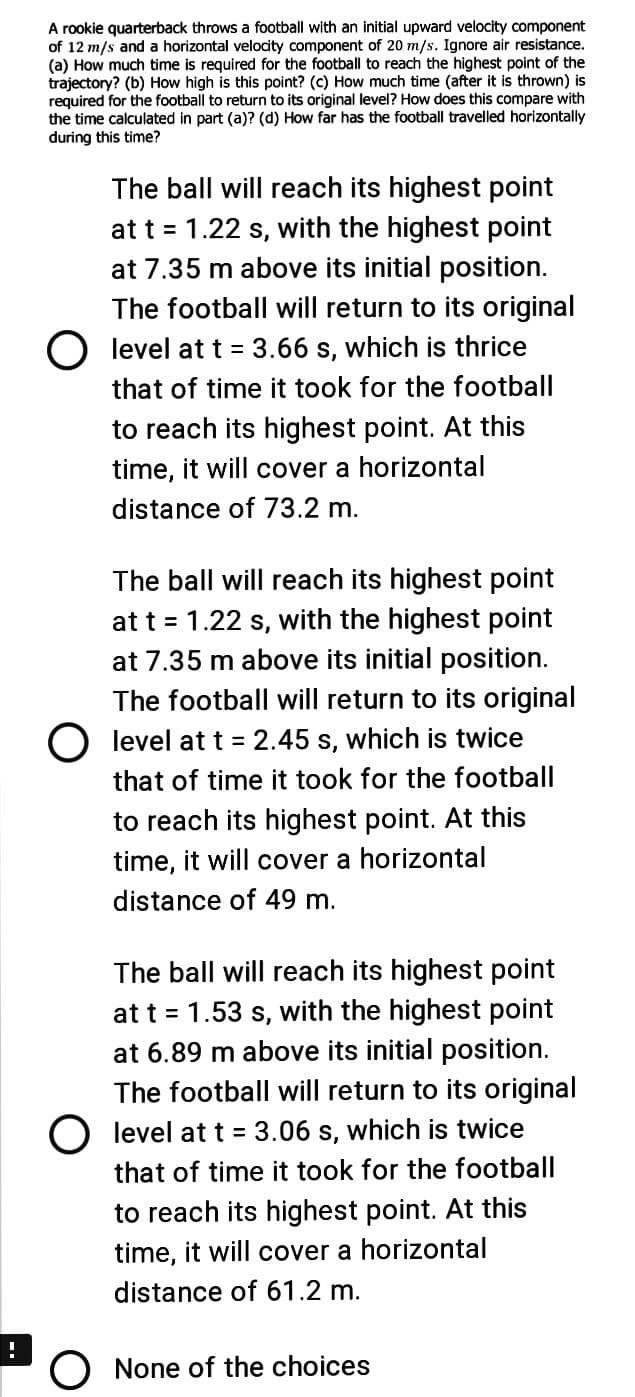A rookie quarterback throws a football with an initial upward velocity component of 12 m/s and a horizontal velocity component of 20 m/s. Ignore air resistance. (a) How much time is required for the football to reach the highest point of the trajectory? (b) How high is this point? (c) How much time (after it is thrown) is required for the football to return to its original level? How does this compare with the time calculated in part (a)? (d) How far has the football travelled horizontally during this time?
Displacement, Velocity and Acceleration
In classical mechanics, kinematics deals with the motion of a particle. It deals only with the position, velocity, acceleration, and displacement of a particle. It has no concern about the source of motion.
Linear Displacement
The term "displacement" refers to when something shifts away from its original "location," and "linear" refers to a straight line. As a result, “Linear Displacement” can be described as the movement of an object in a straight line along a single axis, for example, from side to side or up and down. Non-contact sensors such as LVDTs and other linear location sensors can calculate linear displacement. Non-contact sensors such as LVDTs and other linear location sensors can calculate linear displacement. Linear displacement is usually measured in millimeters or inches and may be positive or negative.

Step by step
Solved in 2 steps with 2 images






